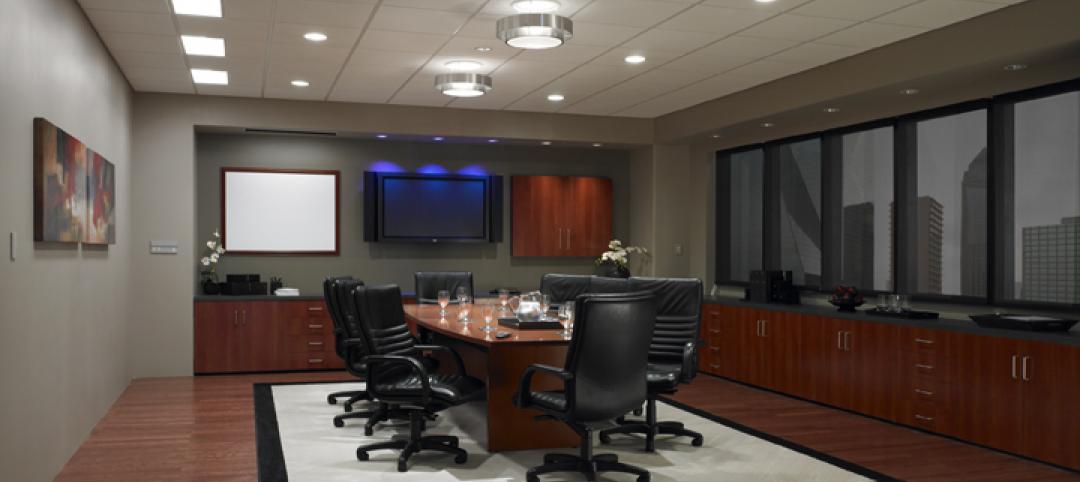Antimicrobial building products marketed as “healthy” or beneficial to human health contain ingredients that may have adverse environmental or human health impacts, and alternative products should be considered whenever possible, according to a new white paper by global architecture and design firm Perkins+Will and the Healthy Building Network (HBN).
Healthy Environments: Understanding Antimicrobial Ingredients in Building Materials exposes the lack of scientific evidence supporting claims that so-called antimicrobial products like paints, kitchen countertops, door handles, flooring, and other interior finishes help ward off communicable diseases. In fact, the report highlights a growing body of research suggesting potential negative impacts of antimicrobials on both the body and the environment. Potential impacts include the possible proliferation of “super bugs” caused by microbial resistance, contamination of aquatic ecosystems, and potential exposure to known or suspected carcinogens like formaldehyde.
“What consumers don’t realize is that the federal government considers antimicrobials pesticides because they are agents used to kill or control living organisms—and they should therefore be used with great care,” says Suzanne Drake, a senior interior designer at Perkins+Will and co-author of the white paper. “Because we caution against using building products containing ingredients suspected of hazardous health impacts, we should avoid products containing antimicrobial ingredients. That includes building products intended for healthcare settings.”
Perkins+Will is placing “Products Marketed as Antimicrobial” on its Precautionary List, urging designers to consider alternatives before specifying them. The move reflects the position of the U.S. Centers for Disease Control and Prevention, the U.S. Food and Drug Administration, and other credible organizations that have reviewed antimicrobial agents and found them to be both ineffective and unnecessary.
“The fact is, there’s zero evidence that antimicrobial additives provide a health benefit,” says Drake.
Building products with antimicrobial additives are relatively new in the marketplace, but their recent surge in popularity has been fueled by manufacturers looking to differentiate themselves and tap into consumer demand for healthy products and healthy built environments. The number of antimicrobial consumer products on the market grew from just a few dozen in 1994 to more than 2,000 in 2014. In some cases, manufacturers add antimicrobial ingredients to a product as a preservative to protect the product from decay, yet they still market the product in ways suggesting that the benefits of the antimicrobials may extend to human health.
“Because the identity and intended purpose of antimicrobials used in building products is often poorly disclosed, it can be difficult to understand what you’re buying,” says Melissa Coffin, principal investigator with HBN and co-author of the white paper. “Perkins+Will’s approach to consider alternative products to those marketing antimicrobial attributes categorically is a good strategy for navigating a complicated issue.” A dedicated appendix in the white paper explains the legal framework that makes the issue so complicated, Coffin adds.
To read a quick overview of the white paper’s top 10 findings, click here.
To read the full white paper, click here.
Related Stories
| Dec 14, 2011
Belfer Research Building tops out in New York
Hundreds of construction trades people celebrate reaching the top of concrete structure for facility that will accelerate treatments and cures at world-renowned institution.
| Dec 14, 2011
Tyler Junior College and Sika Sarnafil team up to save energy
Tyler Junior College wanted a roofing system that wouldn’t need any attention for a long time.
| Dec 13, 2011
Lutron’s Commercial Experience Center awarded LEED Gold
LEED certification of the Lutron facility was based on a number of green design and construction features that positively impact the project itself and the broader community. These features include: optimization of energy performance through the use of lighting power, lighting controls and HVAC, plus the use of daylight.
| Dec 12, 2011
AIA Chicago announces Skidmore, Owings & Merrill as 2011 Firm of the Year
SOM has been a leader in the research and development of specialized technologies, new processes and innovative ideas, many of which have had a palpable and lasting impact on the design profession and the physical environment.
| Dec 12, 2011
Mojo Stumer takes top honors at AIA Long Island Design Awards
Firm's TriBeCa Loft wins "Archi" for interior design.
| Dec 10, 2011
10 Great Solutions
The editors of Building Design+Construction present 10 “Great Solutions” that highlight innovative technology and products that can be used to address some of the many problems Building Teams face in their day-to-day work. Readers are encouraged to submit entries for Great Solutions; if we use yours, you’ll receive a $25 gift certificate. Look for more Great Solutions in 2012 at: www.bdcnetwork.com/greatsolutions/2012.
| Dec 10, 2011
Energy performance starts at the building envelope
Rainscreen system installed at the west building expansion of the University of Arizona’s Meinel Optical Sciences Center in Tucson, with its folded glass wall and copper-paneled, breathable cladding over precast concrete.
| Dec 10, 2011
Turning Balconies Outside In
Operable glass balcony glazing systems provide solution to increase usable space in residential and commercial structures.
| Dec 10, 2011
BIM tools to make your project easier to manage
Two innovations—program manager Gafcon’s SharePoint360 project management platform and a new BIM “wall creator” add-on developed by ClarkDietrich Building Systems for use with the Revit BIM platform and construction consultant—show how fabricators and owner’s reps are stepping in to fill the gaps between construction and design that can typically be exposed by working with a 3D model.
| Dec 7, 2011
NSF International qualifies first wallcoverings distributor to the New American National Standard for Sustainable Wallcoverings
TRI-KES demonstrates leadership in environmental stewardship as the first distributor to earn qualification.

















